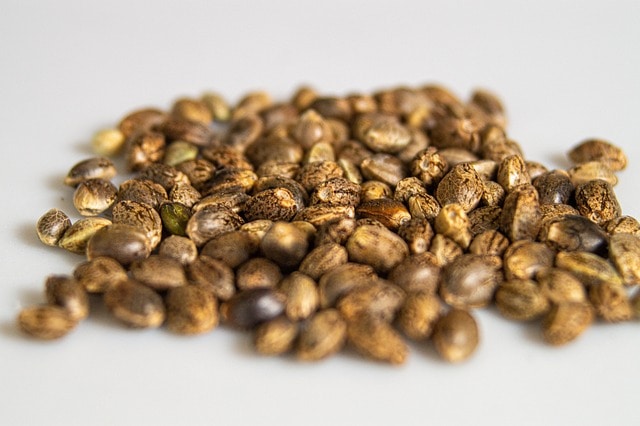Exploring the Therapeutic Potential of Marijuana
Marijuana, also known as cannabis, has gained significant attention in recent years due to its potential therapeutic properties. Whether consumed for recreational or medicinal purposes, this versatile plant has shown promise in alleviating various health conditions. From chronic pain to anxiety disorders, the medicinal power of marijuana is becoming increasingly recognized by medical professionals and researchers alike.
Research has indicated that marijuana contains compounds known as cannabinoids, such as tetrahydrocannabinol (THC) and cannabidiol (CBD), which interact with the body’s endocannabinoid system. This complex network of receptors plays a role in regulating various physiological processes, including pain sensation and mood. By influencing this system, marijuana may offer relief for individuals struggling with pain and anxiety.
The therapeutic potential of marijuana extends beyond its well-known ability to induce relaxation and euphoria. Studies have suggested that certain cannabinoids have anti-inflammatory properties, which could be beneficial for conditions characterized by chronic inflammation. Additionally, ongoing research is exploring the potential of cannabis in managing conditions such as epilepsy, multiple sclerosis, and PTSD.
Understanding the Science Behind Cannabis and Pain Relief
When it comes to pain relief, marijuana’s effectiveness is linked to its interaction with the endocannabinoid system. Here is the list: Cannabinoids like THC mimic endocannabinoids produced by the body, binding to cannabinoid receptors to modulate pain signals. This modulation can result in a reduction in pain perception and an overall sense of well-being.
Furthermore, cannabinoids may influence neurotransmitters involved in pain regulation, such as serotonin and dopamine. By altering the levels of these neurotransmitters, marijuana could help in managing not only the sensation of pain but also the emotional response to it. This dual mechanism of action makes cannabis a promising option for individuals seeking alternative pain management strategies.
In addition to its direct effects on pain pathways, marijuana’s anti-inflammatory properties play a crucial role in pain relief. Chronic pain conditions often involve inflammation, which can exacerbate discomfort. By reducing inflammation, cannabinoids in marijuana may provide relief for individuals suffering from conditions like arthritis, fibromyalgia, or migraines.
Cannabis as a Natural Alternative for Pain Management
The use of cannabis as a natural alternative for pain management is gaining traction among individuals seeking holistic approaches to their health. Here is how it works: Unlike conventional pain medications, which can have adverse side effects and risk of dependence, marijuana offers a potentially safer option with fewer risks of addiction and overdose.
Moreover, the diverse forms of consumption available, such as smoking, vaping, or using edibles, allow individuals to tailor their cannabis experience to their specific needs. This customization enables patients to find a method that delivers optimal pain relief with minimal unwanted effects. As a result, many are turning to cannabis as a gentle yet effective way to manage their pain.
In addition to its analgesic properties, cannabis’s potential to enhance sleep quality is especially beneficial for individuals with chronic pain. Adequate rest is crucial for healing and managing pain conditions, and marijuana’s relaxing effects may promote a deeper and more restorative sleep. By improving sleep patterns, cannabis can contribute to an overall improvement in pain management.
The Role of Marijuana in Alleviating Anxiety Symptoms
Anxiety disorders affect millions of individuals worldwide, with symptoms ranging from mild unease to debilitating panic attacks. Here is how marijuana comes into play: The anxiolytic properties of certain cannabinoids in marijuana have garnered attention for their potential in reducing anxiety symptoms and promoting relaxation.
CBD, in particular, has shown promise in anxiety management without the psychoactive effects associated with THC. By modulating neurotransmitter levels and interacting with receptors in the brain, CBD may help regulate emotional responses to stress and anxiety-inducing stimuli. This calming effect can provide much-needed relief for individuals struggling with anxiety disorders.
Moreover, marijuana’s ability to induce a sense of calm and tranquility can be beneficial for individuals with generalized anxiety or social anxiety disorders. The mild sedative effects of certain cannabis strains may help alleviate tension and promote a more relaxed state of mind, making everyday challenges more manageable for those dealing with anxiety.
Exploring Different Strains and Their Effects on Pain and Anxiety
The vast variety of cannabis strains available offers individuals the opportunity to fine-tune their treatment approach for pain and anxiety. Here is the diversity of strains: Sativa, indica, and hybrid strains each have unique cannabinoid and terpene profiles that can produce different effects on the body and mind, influencing pain perception and mood in distinct ways.
For pain management, strains high in CBD and low in THC are often preferred due to their analgesic and anti-inflammatory properties. These strains offer potential relief without the intoxicating effects of high-THC varieties, making them suitable for daytime use and activities that require mental clarity. Conversely, high-THC strains may be more effective for severe or chronic pain conditions.
When it comes to anxiety, strains with balanced CBD-to-THC ratios are often recommended to harness the anxiolytic effects of CBD while benefiting from the synergistic interactions between cannabinoids. By selecting strains based on their specific cannabinoid content and terpene profiles, individuals can personalize their cannabis experience to better address their pain and anxiety needs.
Methods of Consumption: Finding the Right Approach for Your Needs
Choosing the right method of cannabis consumption is key to optimizing its therapeutic benefits for pain and anxiety management. Here is the array of options available: Inhalation methods like smoking or vaping offer quick onset and precise dosing control, making them ideal for acute pain or sudden anxiety relief.
On the other hand, oral consumption through edibles or tinctures provides a longer-lasting effect, making it suitable for chronic pain conditions or sustained anxiety relief throughout the day. Topical applications, such as creams or balms infused with cannabinoids, target localized pain and inflammation without the psychoactive effects associated with internal consumption.
Ultimately, the choice of consumption method depends on individual preferences, lifestyle, and the specific symptoms being addressed. By exploring different consumption options and experimenting with dosages, individuals can find the right approach that aligns with their needs and goals for utilizing marijuana as a tool for managing pain and anxiety.













